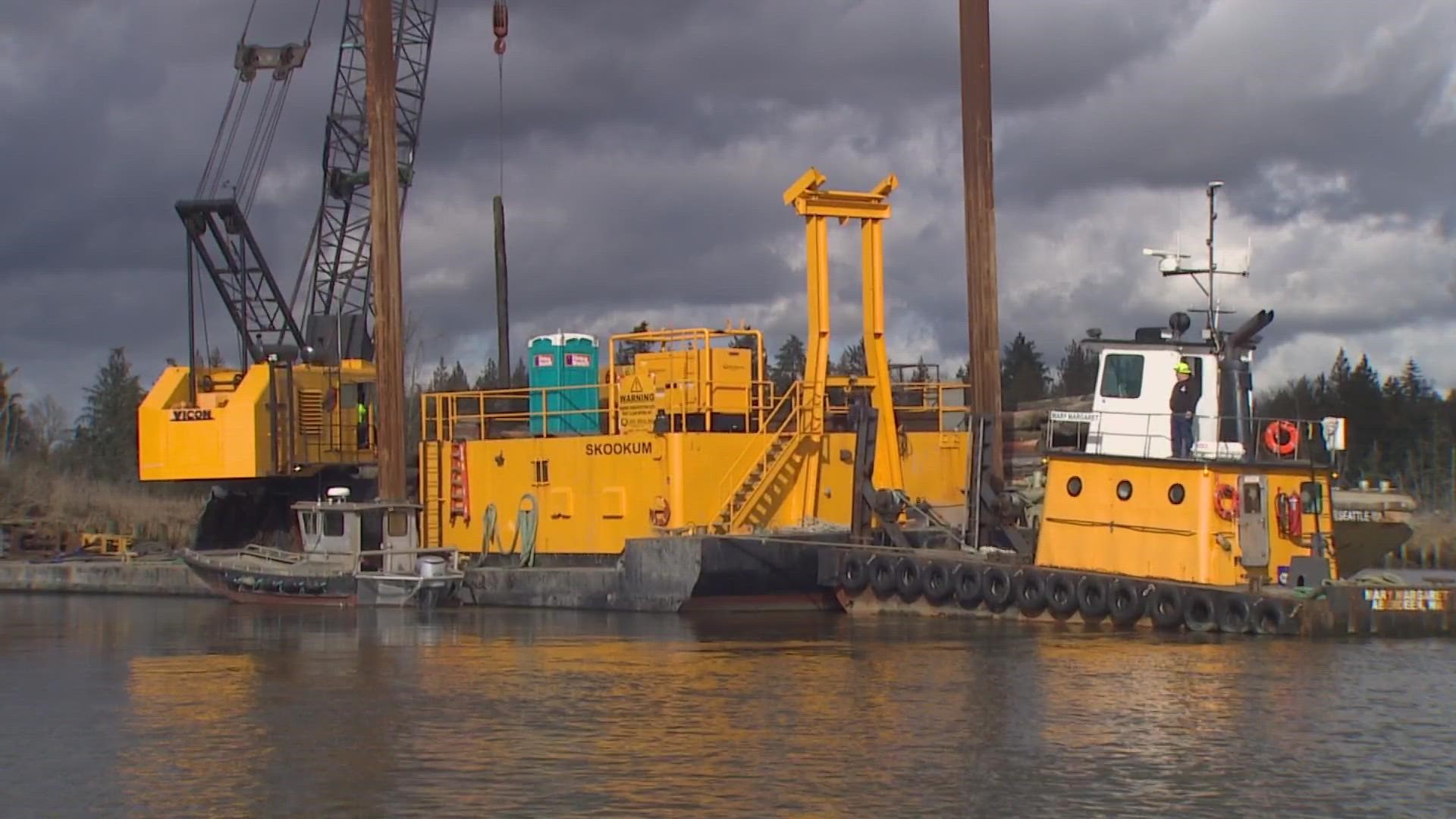MARYSVILLE, Wash. — Boats maneuvered to where workers lifted the last of nearly 300 creosote-soaked pilings Friday, completing a portion of a broader project to restore salmon in the Snohomish River.
"This is an area we've been partnering with Tulalip [Tribes] for a long time to restore this estuary, up and down from the mouth of the Puget Sound, tributaries to the forest," Washington Commissioner of Public Lands Hilary Franz said. "If we can put forth a concentrated effort- our agency, Tulalip, Snohomish County, and other property owners- we will actually be able to turn the tide on this watershed, and with that concentrated focus, restore salmon and move on to other watersheds."
The Washington Department of Natural Resources said the 80-100-year-old pilings were soaked in a preservative that leaked out into the water, causing harm to salmon and forage fish and traveling up the food web.
"Once they get exposed to the creosote it goes into the food chain, through that avenue it makes its way all the way up to our whales," DNR Aquatics Restoration Manager Christopher Robertson said. "When they do look at the toxins that are inside of whale blubber, PAH which is the primary toxin from creosote, is one of the primary ones that's found there, so it really does impact the whole food web, from the base up."
Robertson notes that the pollution is pretty localized, meaning a difference can be made soon after the pilings are removed.
"We're taking a new approach at DNR, working on 2.4 million acres of watershed trying to restore this habitat to ensure we're doing better for our salmon," Commissioner Franz said. "To restore this watershed from the trees up in the mountains we see in the background all the way to the seas and oceans of Puget Sound."
To learn more about ongoing work to restore salmon in the Snohomish River Watershed, click here.

